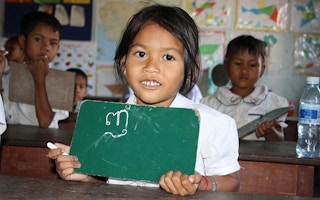One area where education doesn’t have to make its case is in its power to foster economic growth and innovation in urban areas. Cities seek to attract human capital and foreign direct investment by positioning themselves as global hubs for higher education, skills, talent, knowledge and innovation.
Take Shanghai as an example. The Chinese megacity has doubled the proportion of its college-educated labour force in a decade, to the point where today it has access to over 100,000 graduates.
Similarly, Stanford University in the United States reportedly has had significant global economic impact: Some 18,000 firms created by its alumni are based in urban areas in its home state of California.
Clearly cities are about more than infrastructure, clean air and economic growth. People live in these urban areas — and more are arriving every day. The new Sustainable Development Goals (SDGs), which came into effect this year, include a landmark goal on cities, SDG 11, aiming to make them “inclusive and sustainable”.
But this framework says nothing about making cities into built-up metropolises, which is currently the case. Far more needs to be done to ensure the calls of SDG 11 are reflected in city planning.
One of the major challenges cities face is that they house many people working in vulnerable jobs and informal employment. In 2013, domestic workers, home-based workers and street vendors accounted for about a third of urban employment in India, for example. In South Africa, street vendors alone accounted for 15 per cent of the urban workforce.
Since education is inextricably tied to employment prospects, it is a vital partner in fostering more-inclusive economies. UNESCO’s latest Global Education Monitoring Report (GEM) showed that 39 per cent fewer workers from poor backgrounds would be in low-paying informal work if they were able to attain the same education level as workers from richer backgrounds.
For example, based on data from the 2011 Indian Census, the GEM Report team calculated that adult women in Mumbai who were not fully employed had a higher level of illiteracy (19.2 per cent) compared to fully employed women (13.5 per cent).
Making cities inclusive goes beyond the provision of decent work opportunities. Many city residents, including rural migrants, slum dwellers and refugees, are denied access to vital services, including public education.
More than a third of urban residents in lower-income countries live in slums or shantytowns in city centres or urban peripheries. These areas often are characterised by poor access to basic services, including education, particularly quality education that is publicly provided.
Lifelong need
This point is especially salient as countries currently face the highest levels of global displacement in modern history — influxes that city officials and municipalities need to deal with urgently.
By late 2014, 6 out of 10 refugees lived in urban areas, and many of their children were not going to school. Turkey, for example, has been the recipient of a huge proportion of ongoing migrant and refugee flows into Europe, yet today just 30 per cent of refugees in urban areas in that country are enrolled in school.
Migrants to cities looking for employment face challenges such as discrimination, language barriers, unemployment and exploitation in the informal economy. Education in such situations is important not just because it is a human right. It also can provide support to those who lack official documents — and thus are essentially invisible to state services.
Here, lifelong learning, especially among adults, is key. That includes teaching not just through schools and higher-education institutions but also in informal and non-formal education settings.
Non-formal learning activities are often job-related, but they also provide training in life skills and other types of self-development. And we should not forget the needs of over 750 million adults worldwide who are unable to read a single sentence. Yet in the poorest countries, fewer than 5 per cent of adults have attended a literacy programme.
This story was published with permission from Citiscope, a nonprofit news outlet that covers innovations in cities around the world. More at Citiscope.org.

















